Grafana dashboards let you create advanced visualizations using the data of your choice. They can include graphs, charts and other displays that make it easy to analyze information.
Grafana launched in 2014, and has seen major growth in recent years, securing $220 million in its 2021 funding round. More and more people are discovering its value.
It has many plug-ins, expanding its capabilities and letting you further customize your visualizations. In addition to offering new options for displaying your data, such as Gantt charts or map views, they also let you connect to different apps and data sources.
These 15 examples show some of the amazing things you can achieve with Grafana. In addition to looking cool, they can inspire you to get creative and build your own dashboards.
Why have these 15 Grafana examples been chosen?
The following examples have been chosen based on several factors. Some are technically impressive dashboards that showcase the power of the Grafana platform, while others are visually appealing setups that will brighten your day with a little thought.
Interesting or unusual ideas show how versatile the platform is, and will hopefully inspire you to come up with something original yourself. Also, to prove this isn’t just geeks having fun, many of these dashboards are very useful.
They’re also accessible, letting anyone see what’s happening at a glance. They can be used internally to monitor performance, or externally to give clients an insight into your team’s accomplishments.
Server monitoring

In this example by Hector Smith at Medium.com, Grafana is used to monitor a server. Metrics are gathered using Prometheus, and Grafana is used to display them.
For a quick visual overview of any system you need to keep tabs on, Grafana is ideal. This dashboard shows you the server load, memory usage, and status, along with metrics such as the system runtime and disk usage.
The graphs also show how things change over time, letting you spot any changes or unusual activity.
This example also uses the pie chart plug-in, available here.
DevOps nirvana

This dashboard from Devops nirvana lets you monitor Kubernetes or AWS installations. It has been improved upon over multiple iterations, and presents you with a broad range of graphs, giving immediate insight into how well your services are performing.
You can view latency and connections, making it easier to stay constantly vigilant in the battle for maximum performance—there’s even a latency heatmap.
With graphs showing both your traffic and color-coded representations of the HTTP status codes you’re returning, this dashboard is as useful as it is visually appealing.
Performance testing
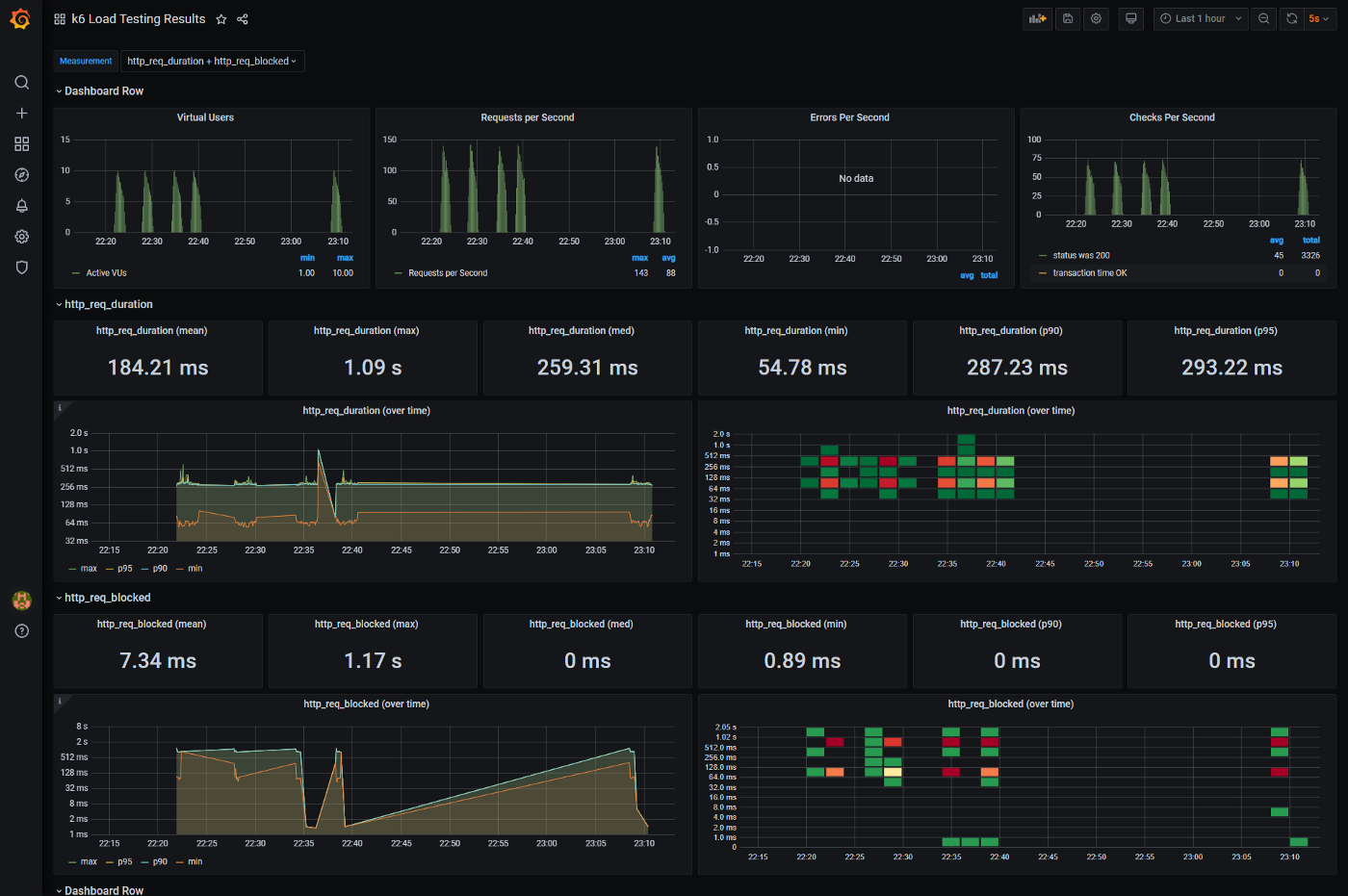
Nigel Mulholland has created a dashboard focused on performance testing. This really shows off Grafana’s power.
The data comes from the k6 load-testing tool. All sorts of useful information is displayed in an accessible, readable format.
The dashboard includes data like requests, users, errors, and two different charts for both request duration and requests blocked.
In addition to looking cool, this dashboard allows you to identify problems quickly, and if you work with a dashboard like this over time, you can develop a feel for when things are out of balance.
Looking at this is so much better than staring at tables of data. Imagine how much time this could save you.
VPN monitoring
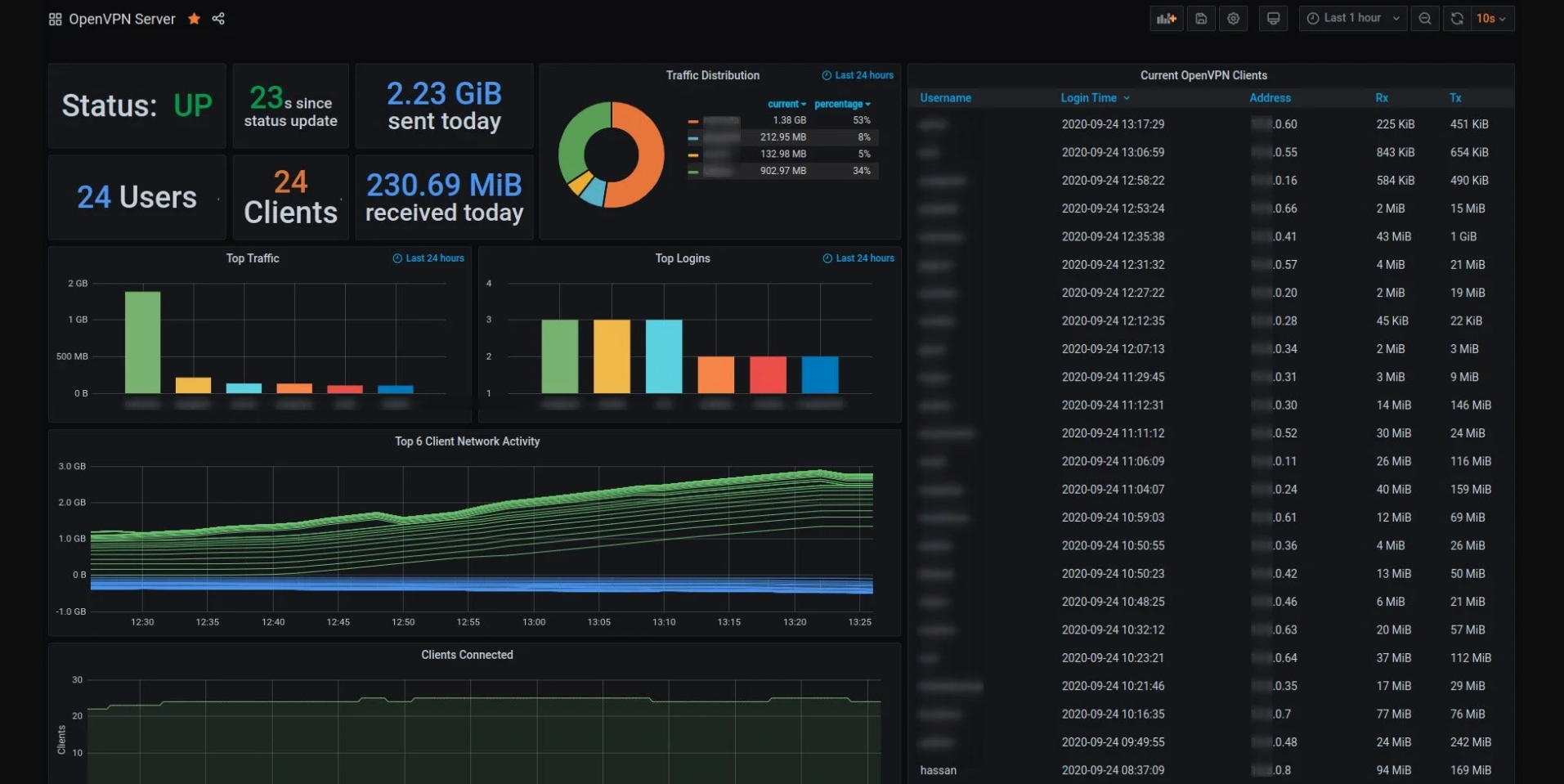
This example is another dashboard that uses Prometheus to generate metrics, but this one shows how you can use Grafana to monitor an OpenVPN connection. The dashboard is on Reddit, but based on a tutorial at kirafunix.
It shows you how many users are connected, how much data has been sent and received, and info on the traffic distribution.
If you’re running a VPN, or any other service, knowing where the bulk of the traffic comes from is vital information.
Virtual machine monitoring
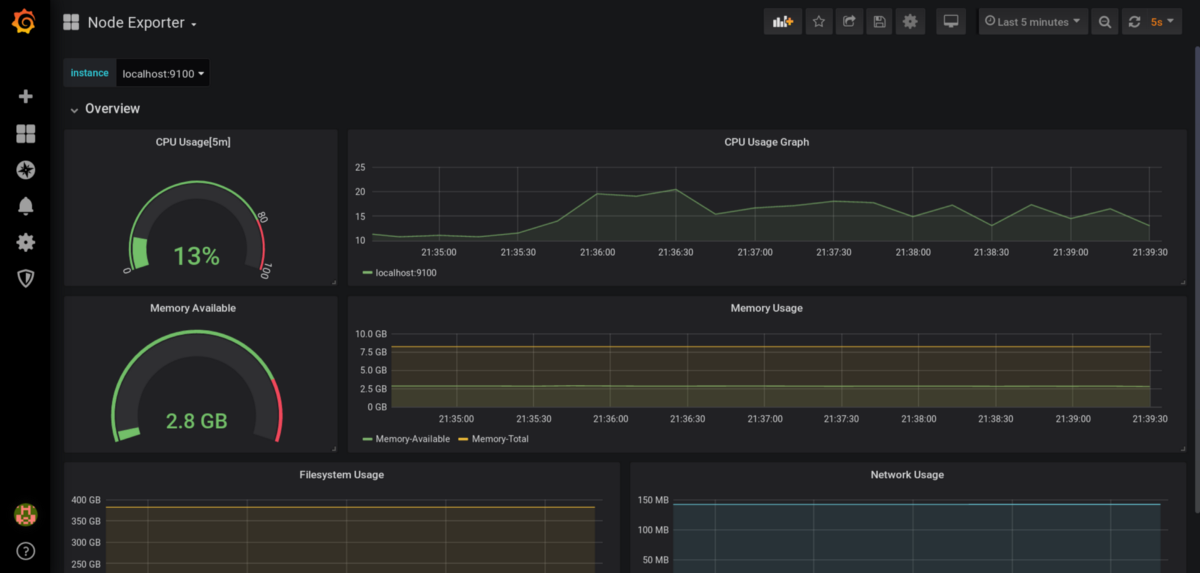
Here’s an easy-to-follow tutorial showing how you can use Grafana to monitor a virtual machine. It displays things like CPU, memory, network, and filesystem usage.
Cleverly, this example includes an alerting system that uses Slack to tell you if anything is too high.
Like some of the other examples, this dashboard uses Prometheus—along with node-exporter—for its metrics.
Docker dashboard
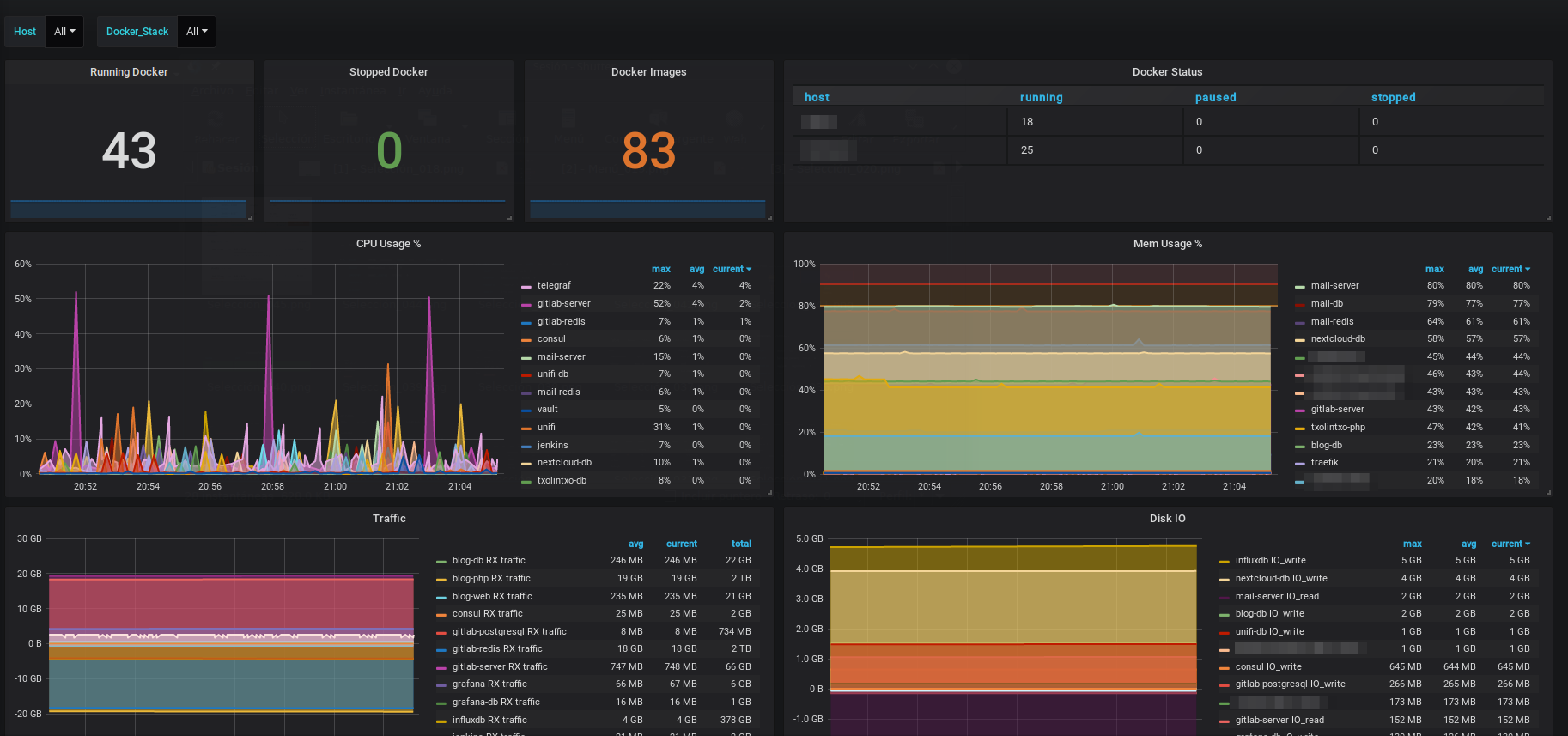
For Docker users who want to keep track of everything, this board is ideal.
It shows CPU, memory, and disk usage, as well as traffic. It also includes some thoughtful details, such as showing the average, maximum, and current values for each tracked statistic.
This board has good reviews, and works straight out of the box without any fiddly configuration needed. For minimal effort, you get a broad overview of your entire deployment, letting you identify problems quickly.
Amazon Web Services billing
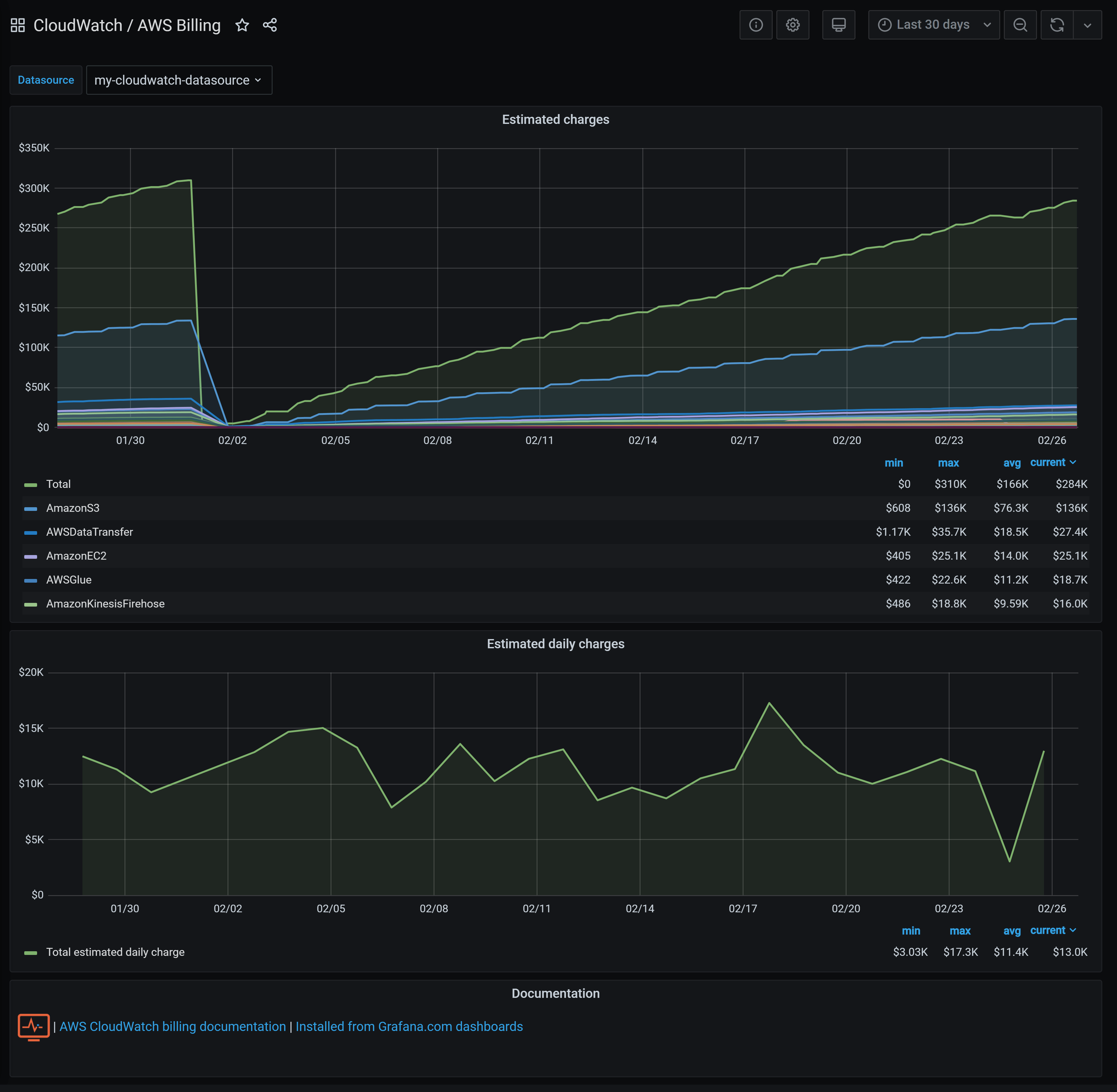
The AWS billing system is enough to strike fear into the sternest hearts. Fortunately, there’s a Grafana visualization to help you make sense of it. This handy dashboard amalgamates charges for various services and gives you a total.
All the information is graphed on a daily scale, making it easy to spot patterns and see how your usage is changing. A quick look at this every morning could save you a nasty surprise when your bill comes through.
Elasticsearch
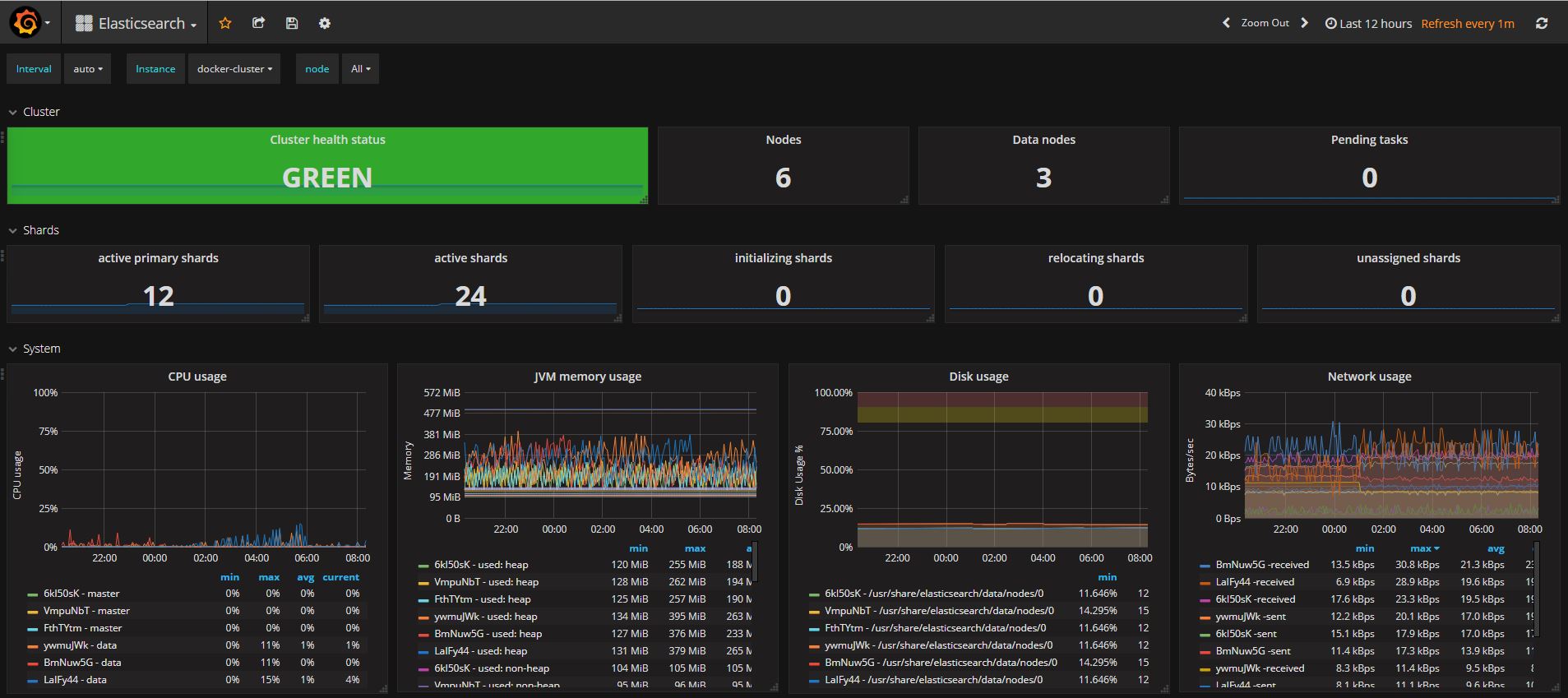
This Elasticsearch focused dashboard includes several screens of info.
There’s a main screen displaying your status, along with other metrics such as CPU, memory, network, and disk usage. These are further broken down by node, and even the heap and non-heap memory for each one.
Further screens go into more depth, showing you details useful for in-depth analysis, such as your active threads and your operations rejected, along with times for indexing, queries, and merges.
This data can show you exactly where your system is struggling, and can help pinpoint your efforts at streamlining if you’re trying to maximize system performance.
These metrics are invaluable if you need to monitor node performance closely.
Kubernetes deployment stateful daemonset metrics
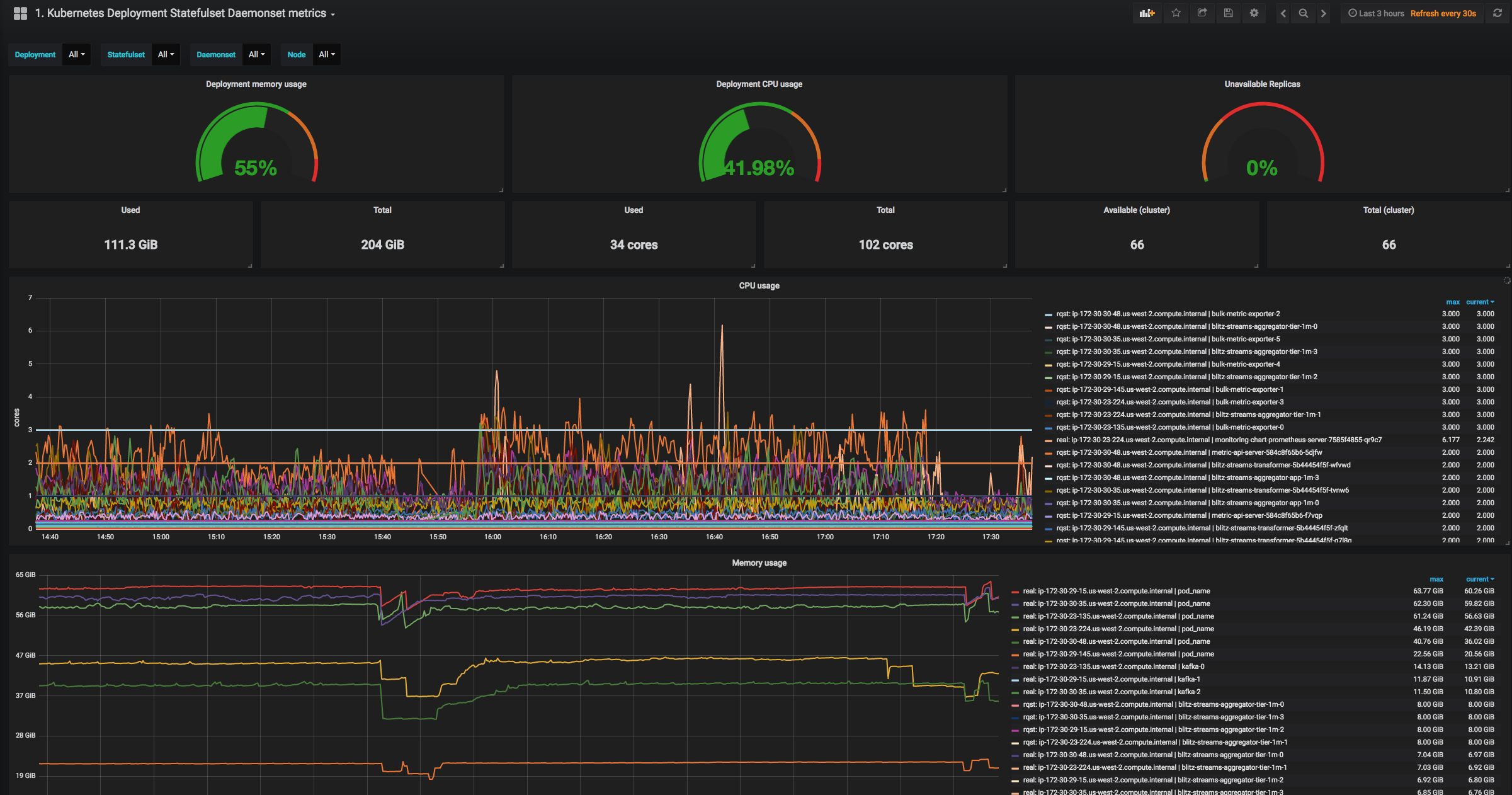
This Kubernetes dashboard presents a lot of data in graph form, along with a few easy-to-read dials that show you if any part of your cluster is under pressure.
You can see your cluster’s overall CPU and memory usage, along with a graph showing how it all breaks down per node.
It’s an impressive volume of data crammed into one place, and though it looks a little confusing at first, once you know what you’re looking at it’s easy to spot anything that needs to be fixed.
This dashboard isn’t limited to just showing you what’s going on, though—it also includes Slack alerts and SMS notifications, giving you round-the-clock monitoring.
Kubernetes cluster cost and utilization metrics
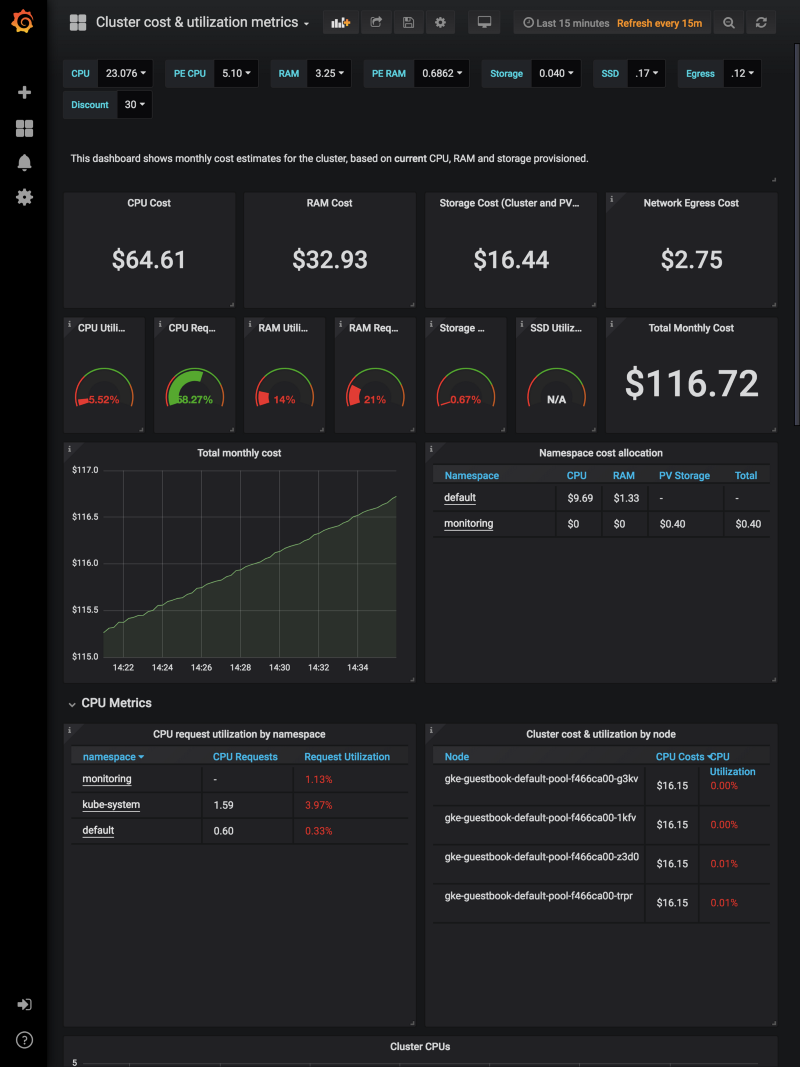
If you’re running Kubernetes and your primary concern is cost, this is the dashboard for you. While your engineers might appreciate the detail in the previous dashboard, this simply tells you what you’re using and paying for.
It separates the costs for memory, processing, network, and disk use, and gives you a running monthly total.
In addition to helping you keep track of your bottom line, it’s a great piece of eye candy for managers looking to show off their tech chops.
AKS container insights

Who doesn’t love maps? With this Grafana dashboard you can watch as your AKS containers spread to cover the globe.
This map idea can also be taken and applied to other kinds of servers or data sources, so it’s a great way to track your product as it grows in popularity around the world—and to plan where you could target next.
Akka actor system
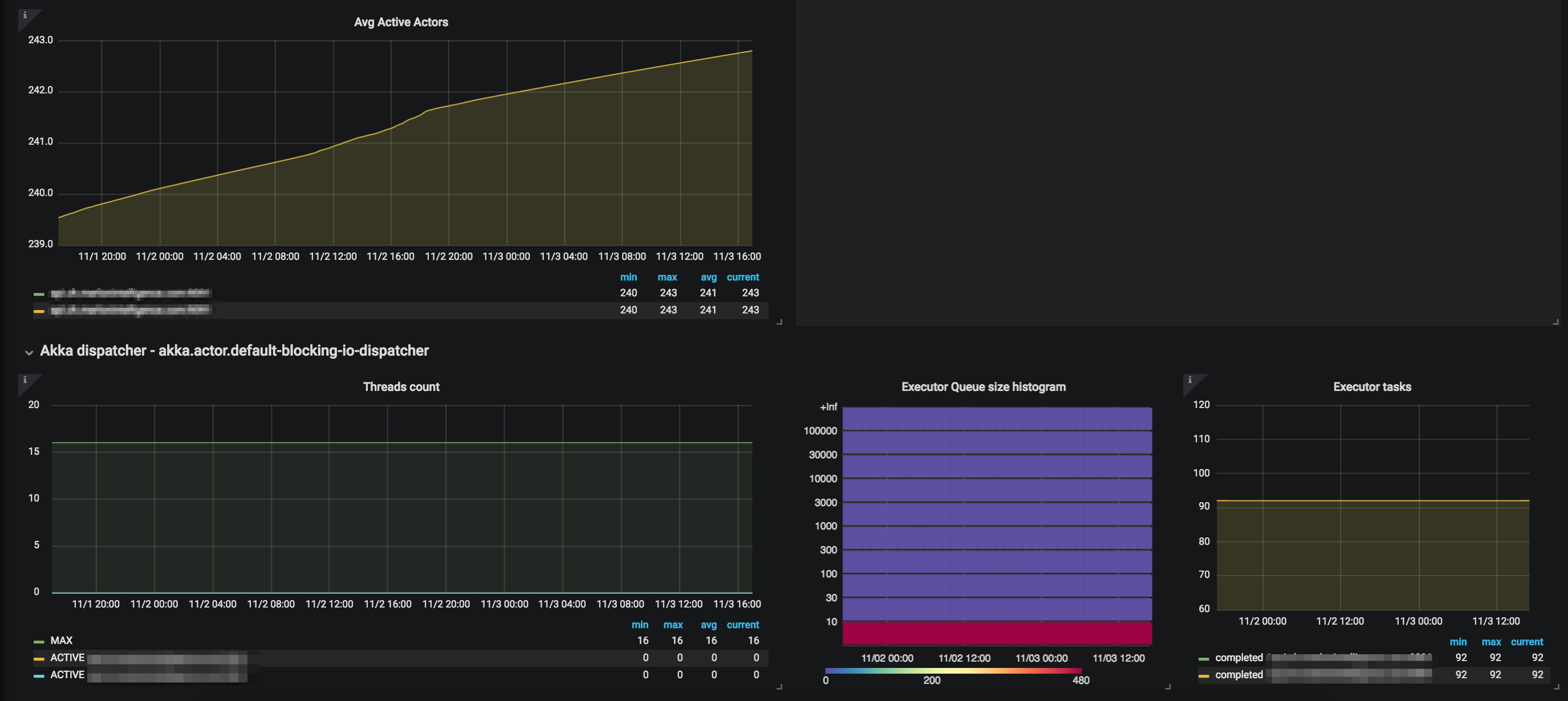
Here’s an example that shows how you can use Grafana with a more specialized tool. In this case, it’s wired up to Akka, a toolkit for message-driven applications. It shows you details on the actor system, such as the processed messages and active actors.
You can also monitor the executor tasks and queue size, along with the thread count. This uses Prometheus to pipe in data.
Node exporter full

Look no further, Node nerds. This is the dashboard of your dreams, containing almost every value exported by the Prometheus Node exporter.
Take a look at the dials and graphs, then look to the bottom of the screenshot, where further expandable panels await the click of your mouse. This dashboard doesn’t limit you to a just a few stats. It gives you a comprehensive overview of what Node is doing, and will be of great help to information-hungry Node developers.
Kubernetes overview
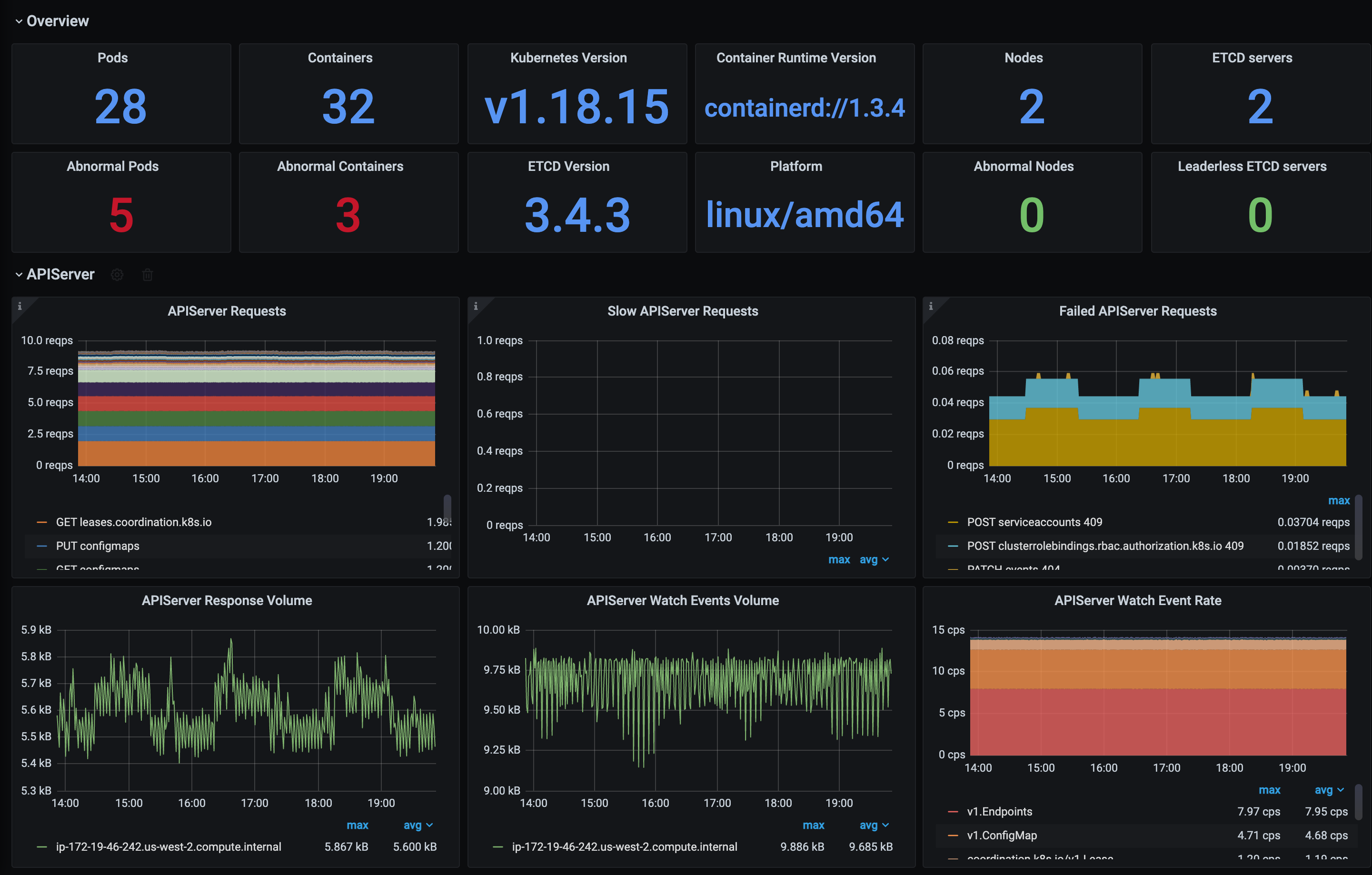
This dashboard provides a broad selection of stats, including some less obvious ones.
It uses multiple data sources to show things like leader changes, commit to disk latency, various kinds of resource saturation, and more. That makes it an excellent resource for Kubernetes developers looking to peek into the internals of their deployments.
Nginx logs and geo map
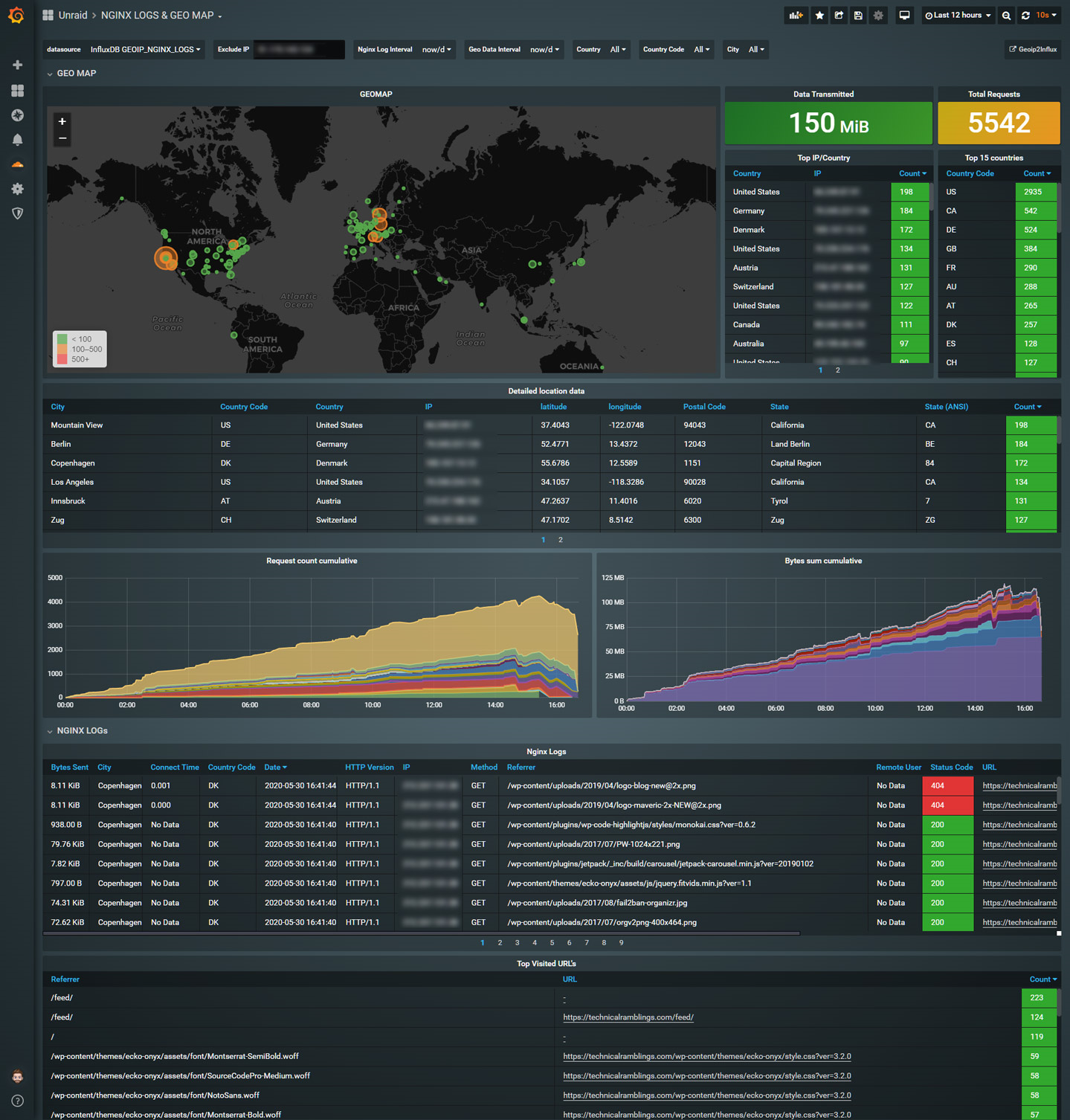
This is another dashboard featuring a map, allowing you to easily see how a global deployment is performing.
This time it’s for Nginx, showing you where log entries originate and giving you various statistical data sorted geographically. You can track details including requests and bytes sent, along with IP and referrer data.
This dashboard is great if you want to see where you’re getting the most hits and break down what kind of traffic comes from where.
Final thoughts
Grafana dashboards are an easy way to visualize data. As you’ve learned today, they don’t just look great—they’re also extremely useful. It’s a flexible tool that lets you stretch your imagination and bring data to life. You can create simple, consumer-oriented displays or advanced scientific readouts. If your company works with data, there’s a good chance you can use Grafana to present it better and drive engagement with your staff and clients.
If you’re looking to build even more flexible dashboards with data from many different sources, you should try using Airplane. You can use Airplane’s React-based UI kit, Views, to build and customize powerful dashboards that fit your needs. Whether you need a Stripe billing dashboard, a feature flag dashboard, or something else, you can easily build it with Airplane.
To try out Airplane and build your first dashboard within minutes, sign up for a free Airplane account or book a demo.



